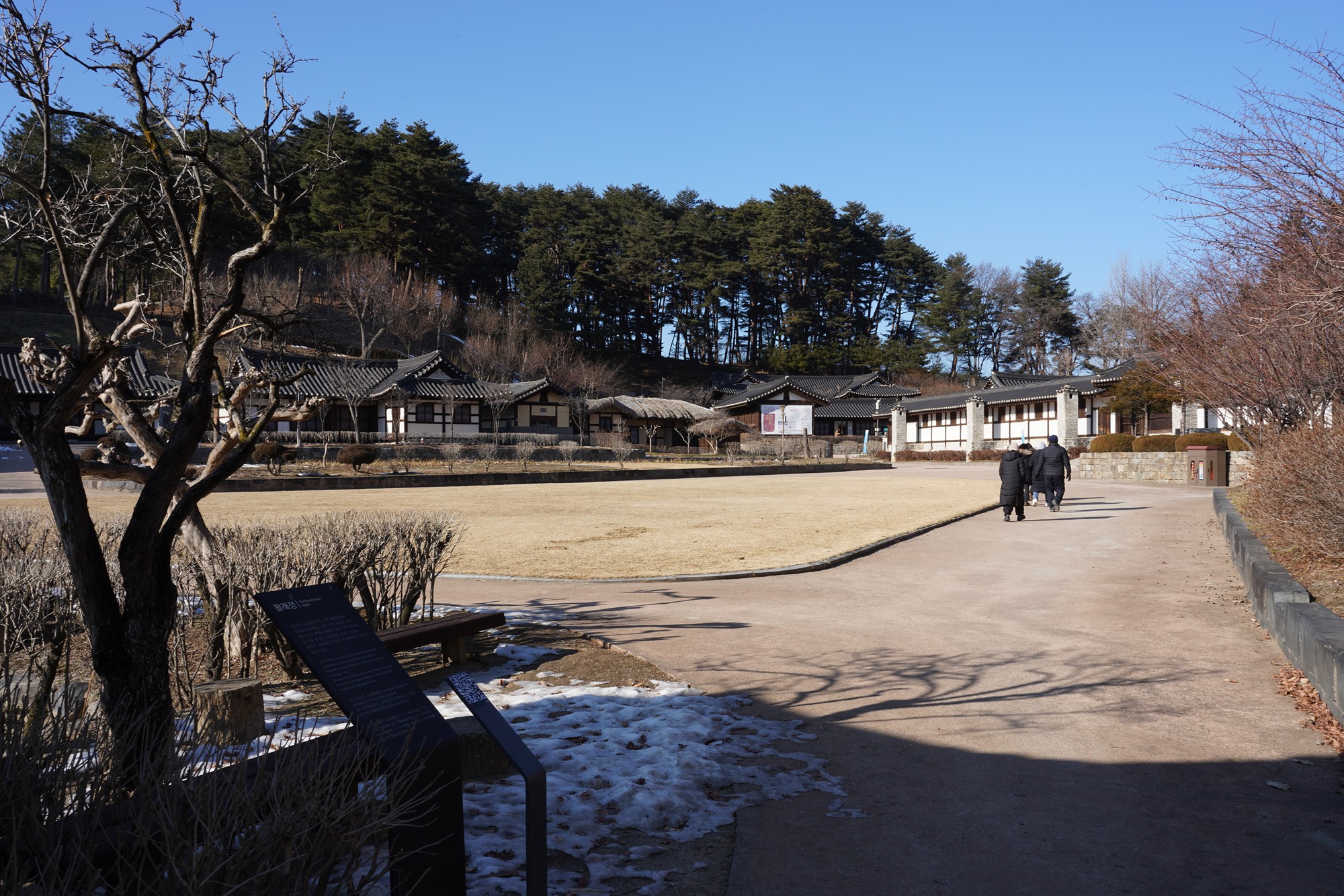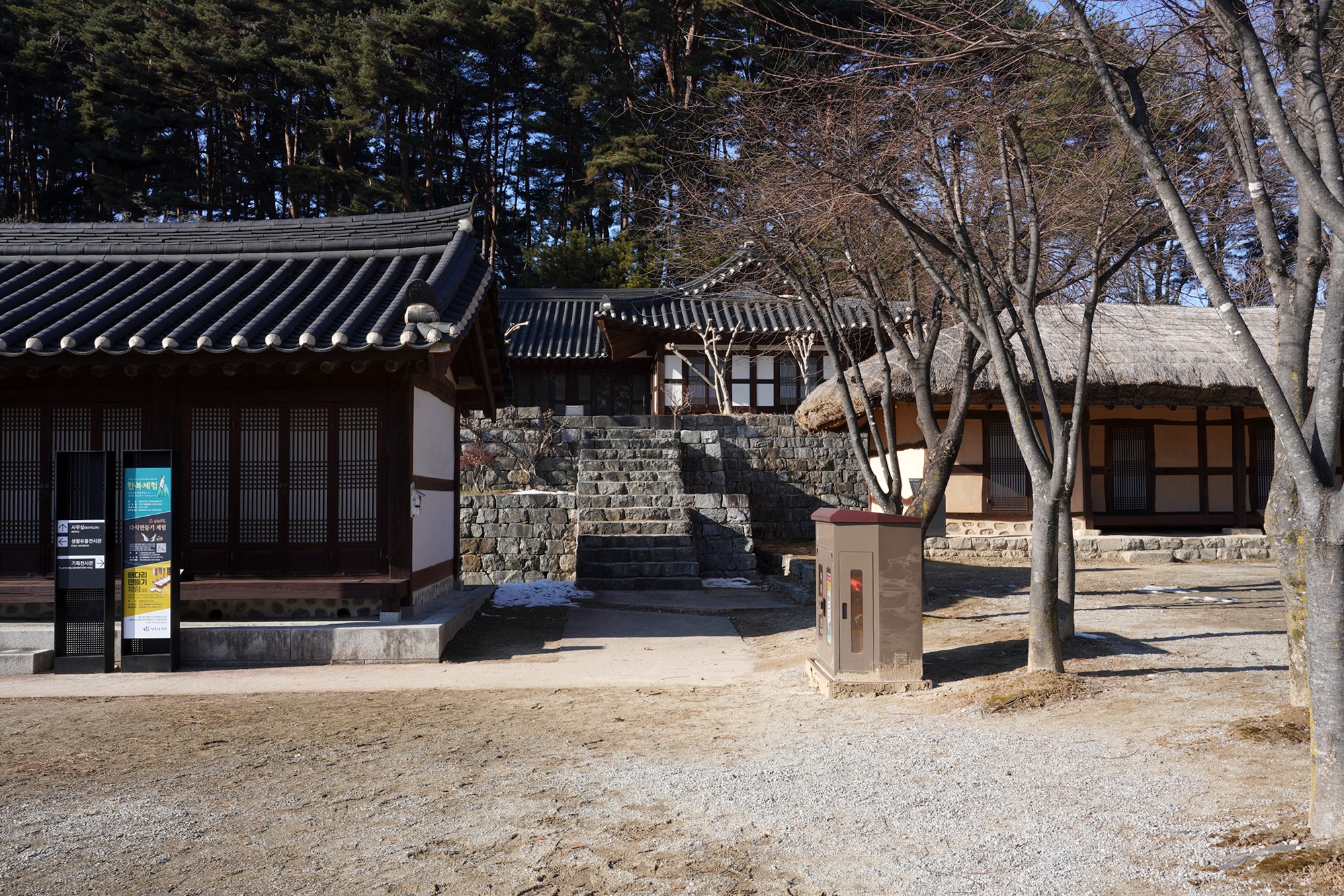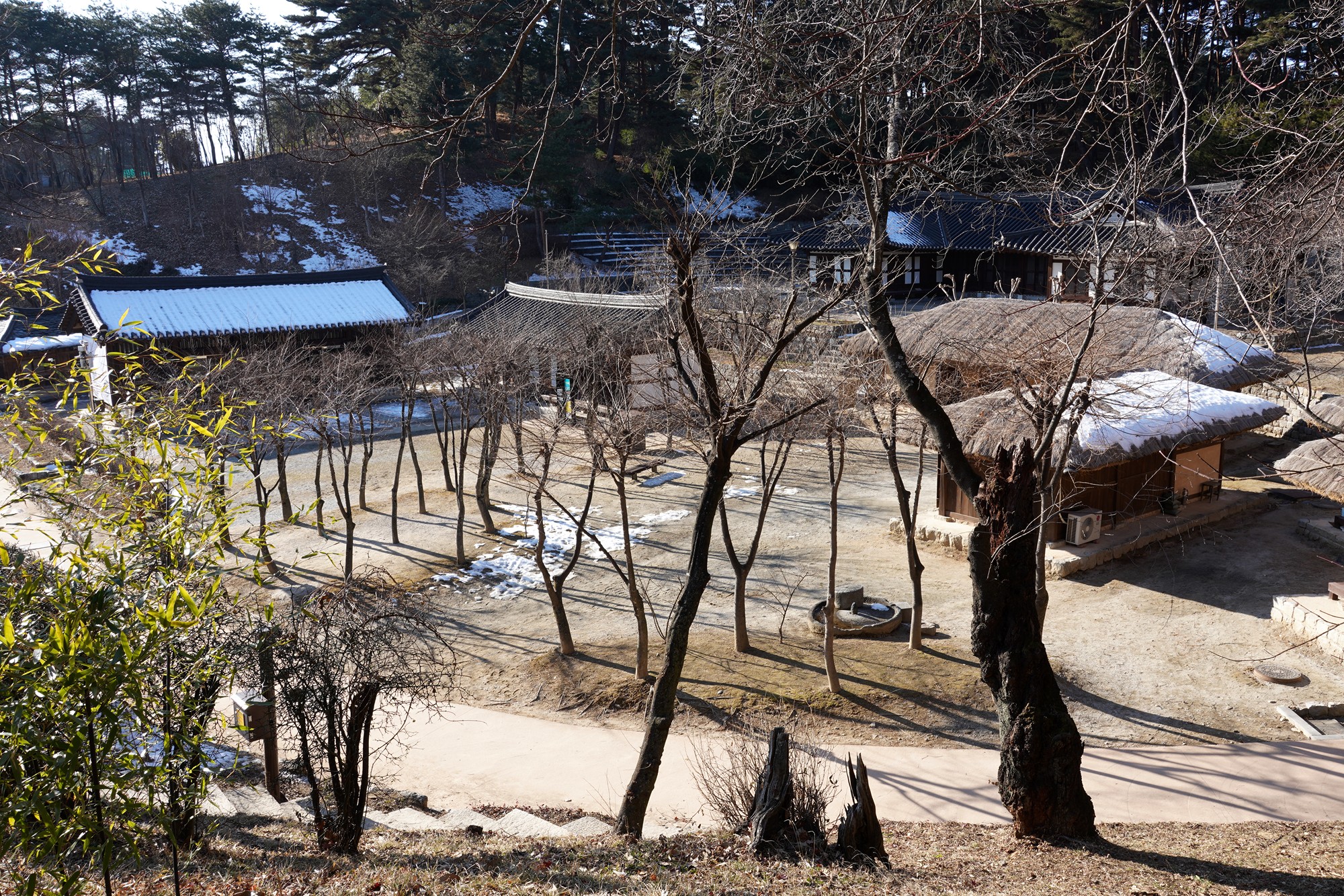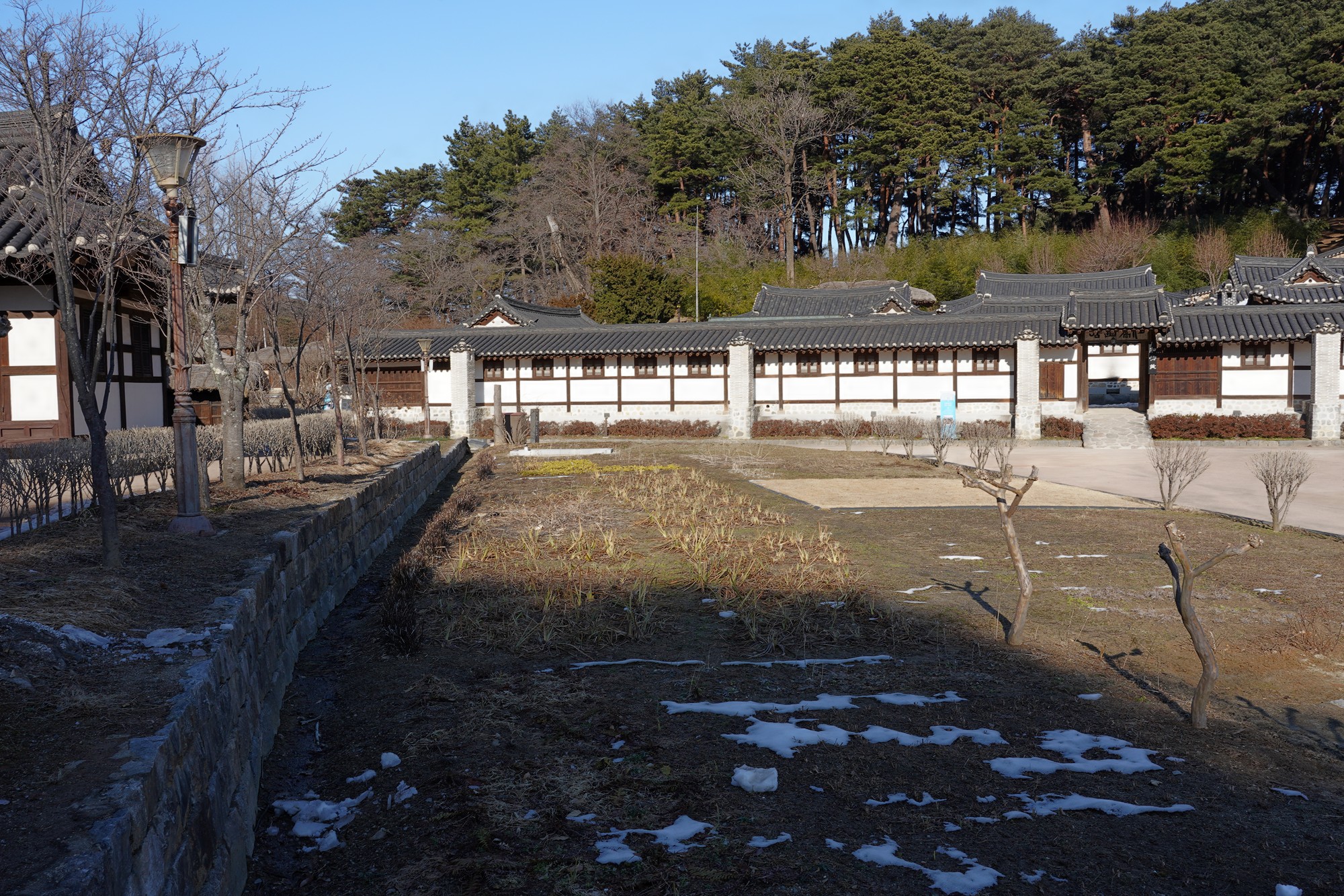Gangneung Seongyojang and Gyeongpodae Pavilion, South Korea
Seongyojang House is the former upper-class residence of Lee Nae-beon (1703-1781) and his family. The Gyeongpodae pavilion was built in 1326. 363
Gangneung Seongyojang: 63, Unjeong-gil, Gangneung-si, Gangwon-do, South Korea
Gyeongpodae Pavilion: 365, Gyeongpo-ro, Gangneung-si, Gangwon-do, South Korea
Date Picture Taken: January 2022
Seongyojang House has all the features of a typical upper class residence during the Joseon period. The complex even has a large pond with a pavilion named Hwallaejeong Pavilion. While the building still blends beautifully with the surrounding nature, Seongyojang House has been well-preserved and is considered a valuable resource in the historical research of living conditions of upper class households during the Joseon dynasty.










The entrance to the main residence area

Looking at the right side at the entrance

Inside the main residential area, viewing the left side

Looking at the right side, I will return to this side later.

For now, see the left side first


House of the right side

the left side

Go forward, exit through the door

Just existed from the main residential area, the panoramic view left to right




Walk to the left side


Looking back at the front side of the main residential entrance.

Go back to the place where I existed from the side door of the main residential area.

There is a stair that goes up at the back of the houses.

Go up, looking at the another residential area

Panoramic view of the area, left to right



A closeup view

Looking back

Looking down


Came back to the lower side



Other stairs at the back of the main residential area.

Looking down at the main residential area

Looking down at the other side

Came down again

and entered the main residential area through the side door and walked all the way to the right side of the residential area, which I skipped earlier. Now is the time to explore.


another living area





Exiting the area

and exit the main residential area

The buildings in front (which are the buidlings next to the main residential area) are not accessible by tourists because people live there.

Walking back to the main entrance to this complex.


A coffee shop in the complex



Another short bus ride took me to Gyeongpodae Pavilion which is next to Gyeongpoho lake.




Climbe a little hill

and there it is

The pavilion was originally built in 1326 but was moved to its current location in 1508. The pavilion shape and design changed over time before settling on the current design. The pavilion has five pillars in the front and on the side, with a gabled roof line typical of Korean architecture.



